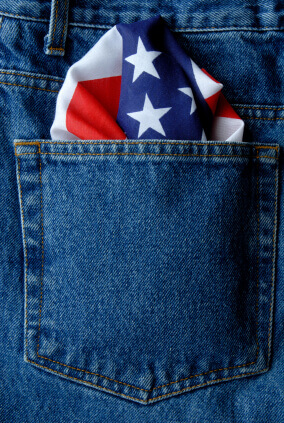
Currently, the president of the United States is on a quest to seek out solutions for American jobs. While I admit I have not personally reviewed the plan, I can speak to what most small and medium business owners believe to be a solid plan for job restoration in the USA.
It’s simple, right? Just buy U.S. products. But it’s not that simple, because there are not many available to buy. Those of us who look at labels know this all too well. But depending on the major retailers to switch to American-made products isn’t likely to work, and here’s why.
I have personally contacted several CEO’s and CMO’s of some well-known and respected retail chains who market a wide variety of merchandise across the country. These business leaders contend they are not aware of a market demand specifically for American-made goods. That’s hard to believe unless you live on Mars.
I believe that small business retailers are smarter and certainly more agile than the big box stores and already know that there is an increasing market for American-made goods. Smart consumers understand that buying U.S. goods is a great way to support U.S. jobs. The retail price for American goods sold by independent retailers is comparable with imported goods sold by the large merchants, for the most part. But the volume presently goes to the mass merchants of course. Mass merchants sell imports because of the large profit margins they capture.
How is it that a department store can put $50 shirts on sale for $12? It is because they often work on 65% – 75% or more margins. Even in retail gift packaging, we have seen so-called import bargain store requirements for a minimum of 70% margin on paper goods. While none of us in business can really blame retailers for their high margin diet, it does come at a price. It translates into a loss of American jobs and an attitude that resists a return to U.S. products.
Small business retailers who work on standard keystone margins of 50% can and do market American-made goods, even if they have to produce them themselves. If a shirt is $50 at retail, you can buy one that is made in America at wholesale for $25. That pricing is competitive with a shirt from China until the merchant has a “sale” – a frequent occurrence. But the trump card is an awareness on the part of the buyer to make a commitment to purchasing U.S. goods. It’s tough, but not impossible.
I went to Sears just the other day. They had some nice polo shirts on sale for $8 – seriously cheap. But I know that a shirt should cost more, and sure enough, it was made in Honduras. It’s a race to the bottom. No way was I going to buy an $8 shirt – that just isn’t right. What the mass merchants are not picking up on is that people like me are starting to gain in numbers. More and more of us are simply not buying if it isn’t made in the USA.
My point to these CEO’s and CMO’s is that a 50% profit margin is a whole lot better than 0%! I think they will have to learn a lesson from us.
Robby Meadows
President
Nashville Wraps
P.S. This week there have been articles in the news about U.S. companies retreating from China to bring some jobs back into the USA. China is seeing dramatic increases in the cost of labor and fewer workers at the factories. Also, China is fueling its own demand for goods and services. While this is good news, most of the imports coming from China are not from firms with stateside manfacturing. Those products will shift out of China to India or some other place eager to get the orders. As an aside, China is starting to become a market for U.S. goods. The Chinese see American products as sign of quality and prosperity… how insightful of them!
Made in America Resource Guide
